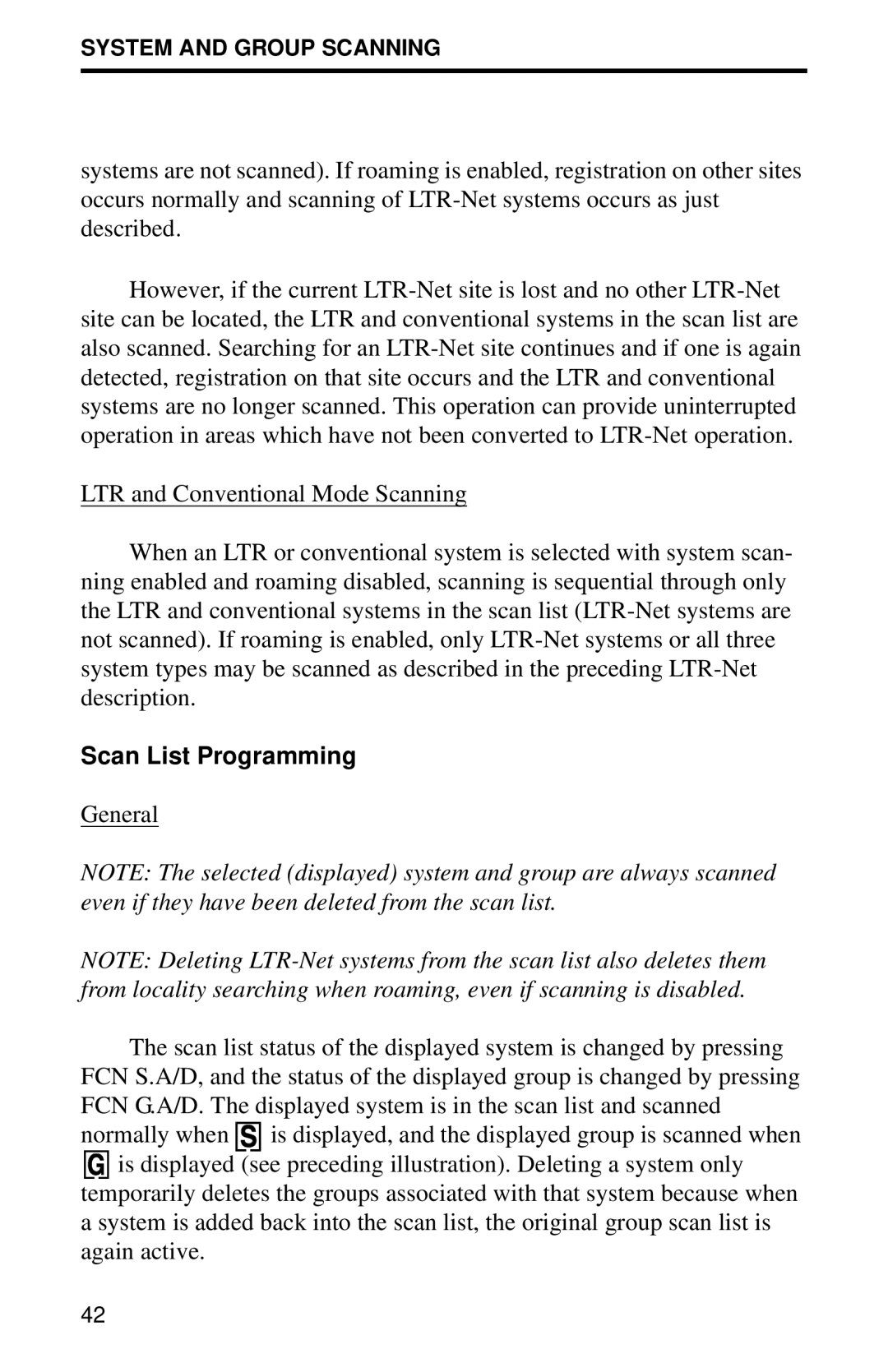
SYSTEM AND GROUP SCANNING
systems are not scanned). If roaming is enabled, registration on other sites occurs normally and scanning of
However, if the current
LTR and Conventional Mode Scanning
When an LTR or conventional system is selected with system scan- ning enabled and roaming disabled, scanning is sequential through only the LTR and conventional systems in the scan list
Scan List Programming
General
NOTE: The selected (displayed) system and group are always scanned even if they have been deleted from the scan list.
NOTE: Deleting
The scan list status of the displayed system is changed by pressing FCN S.A/D, and the status of the displayed group is changed by pressing FCN G.A/D. The displayed system is in the scan list and scanned normally when ![]()
![]()
![]() is displayed, and the displayed group is scanned when
is displayed, and the displayed group is scanned when ![]()
![]()
![]() is displayed (see preceding illustration). Deleting a system only temporarily deletes the groups associated with that system because when a system is added back into the scan list, the original group scan list is again active.
is displayed (see preceding illustration). Deleting a system only temporarily deletes the groups associated with that system because when a system is added back into the scan list, the original group scan list is again active.
42
